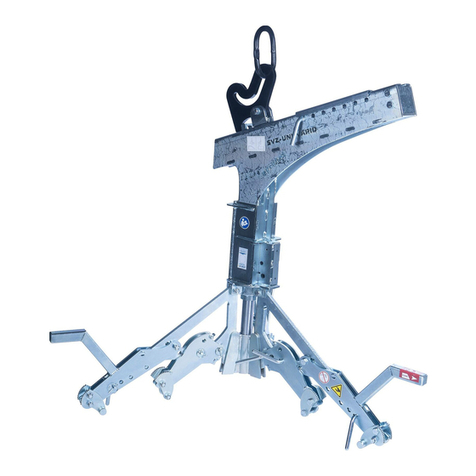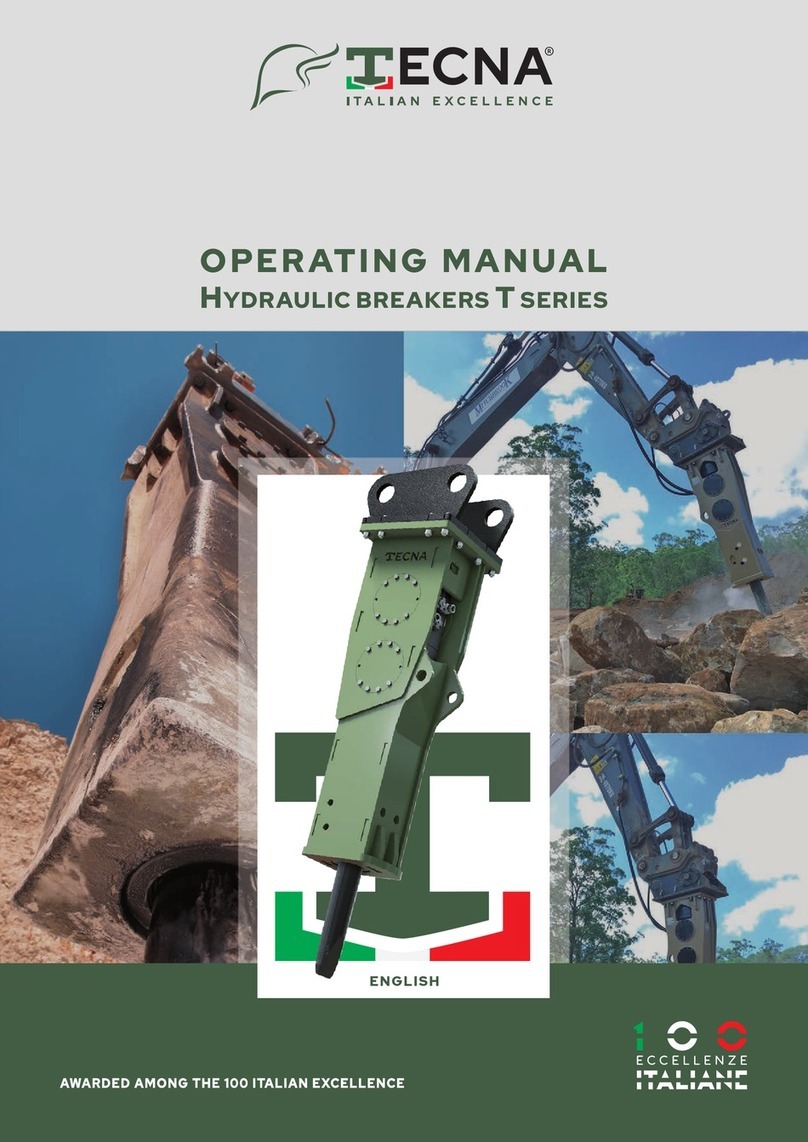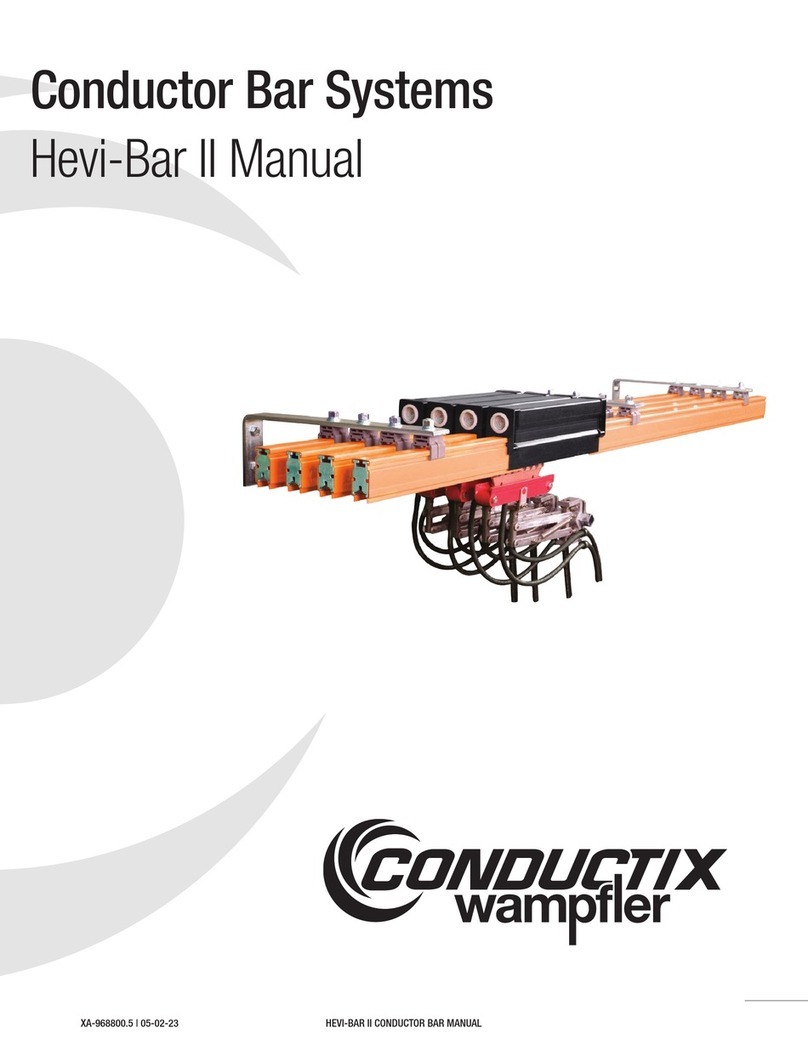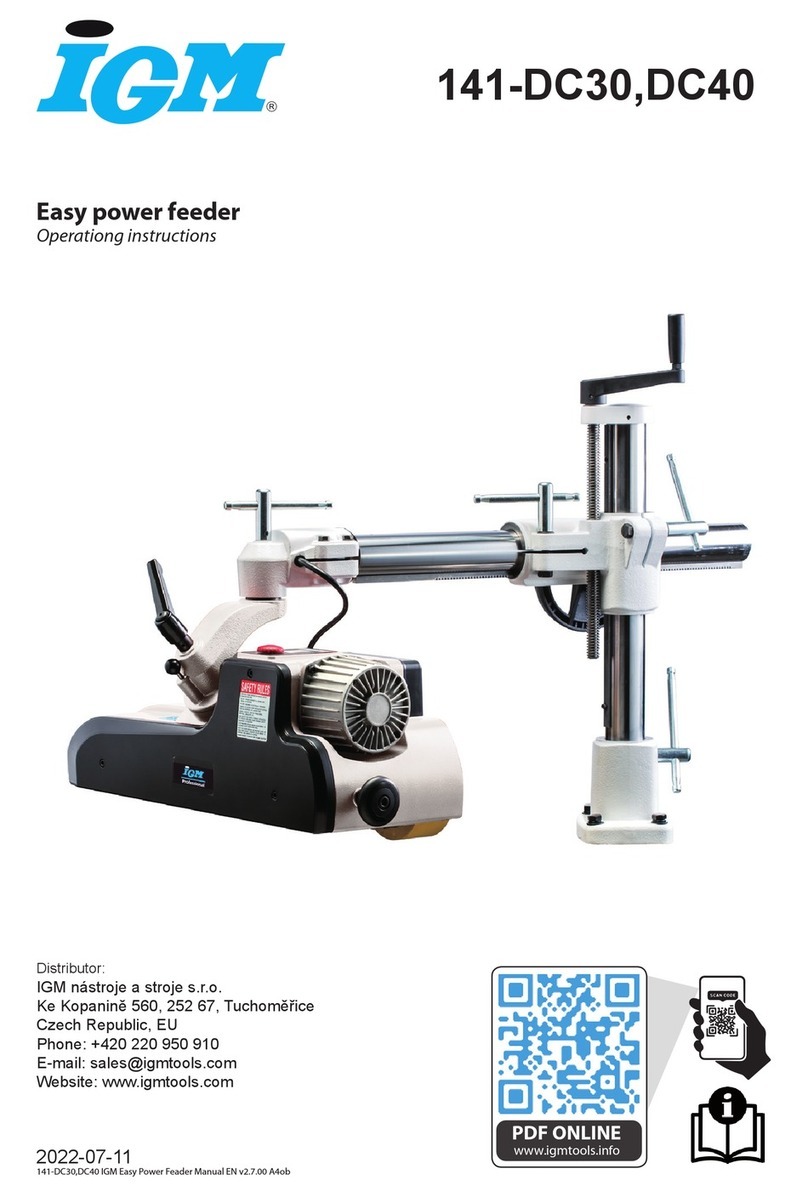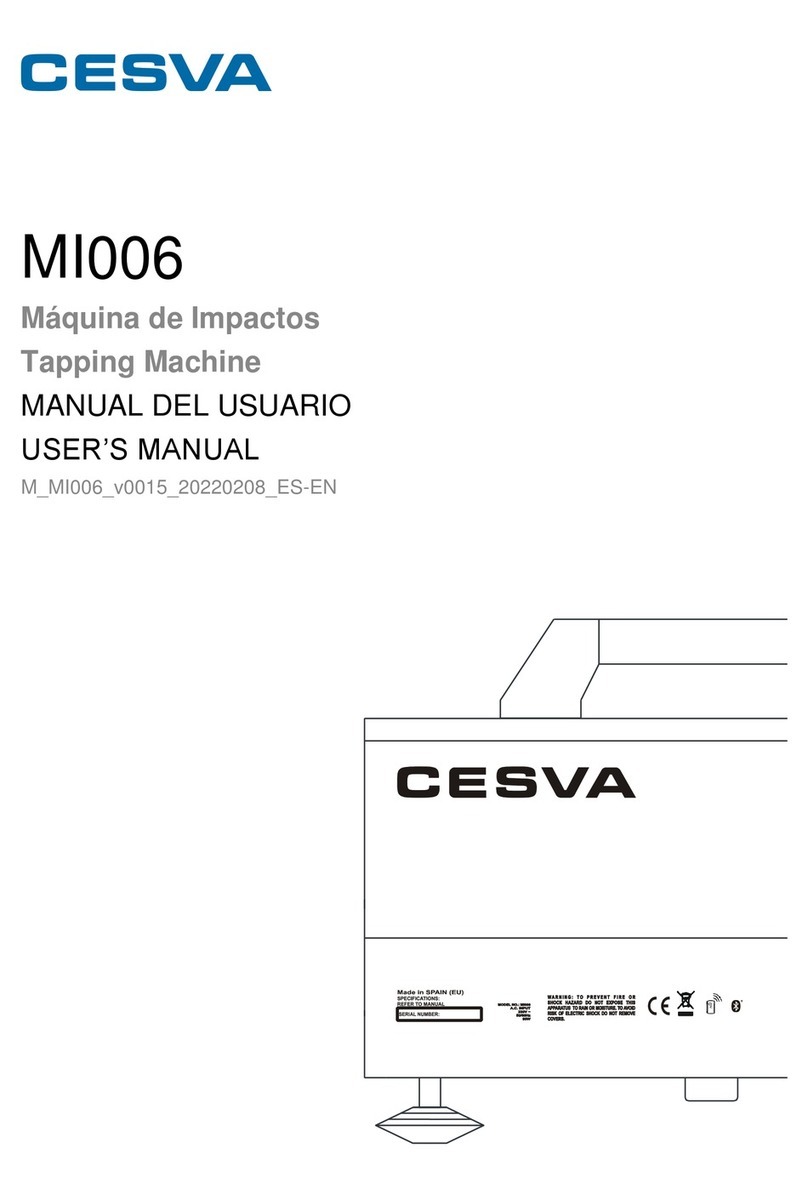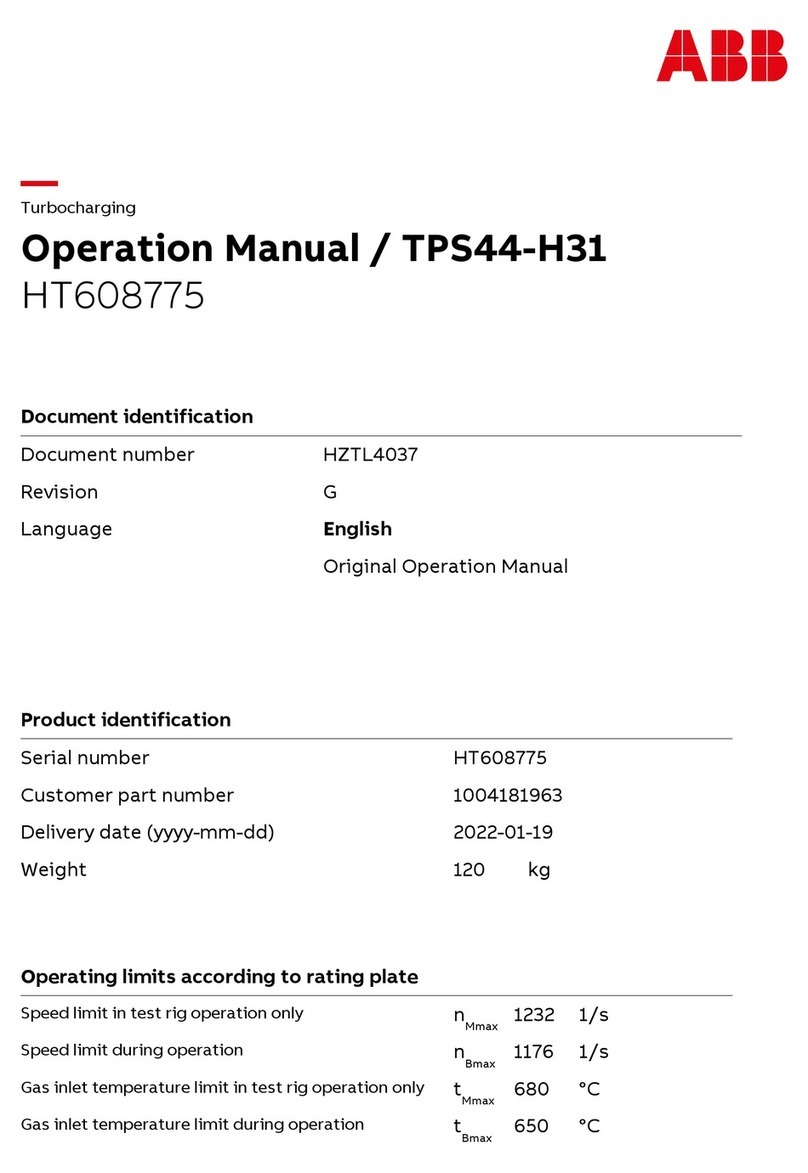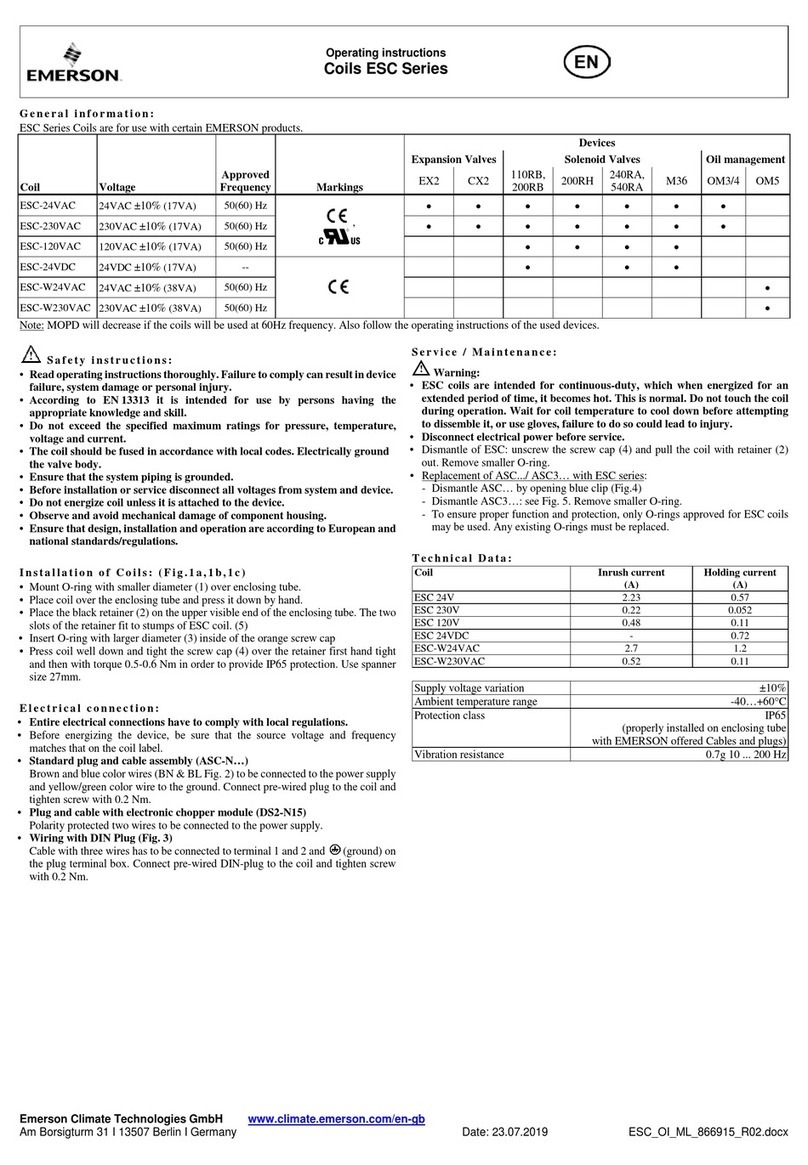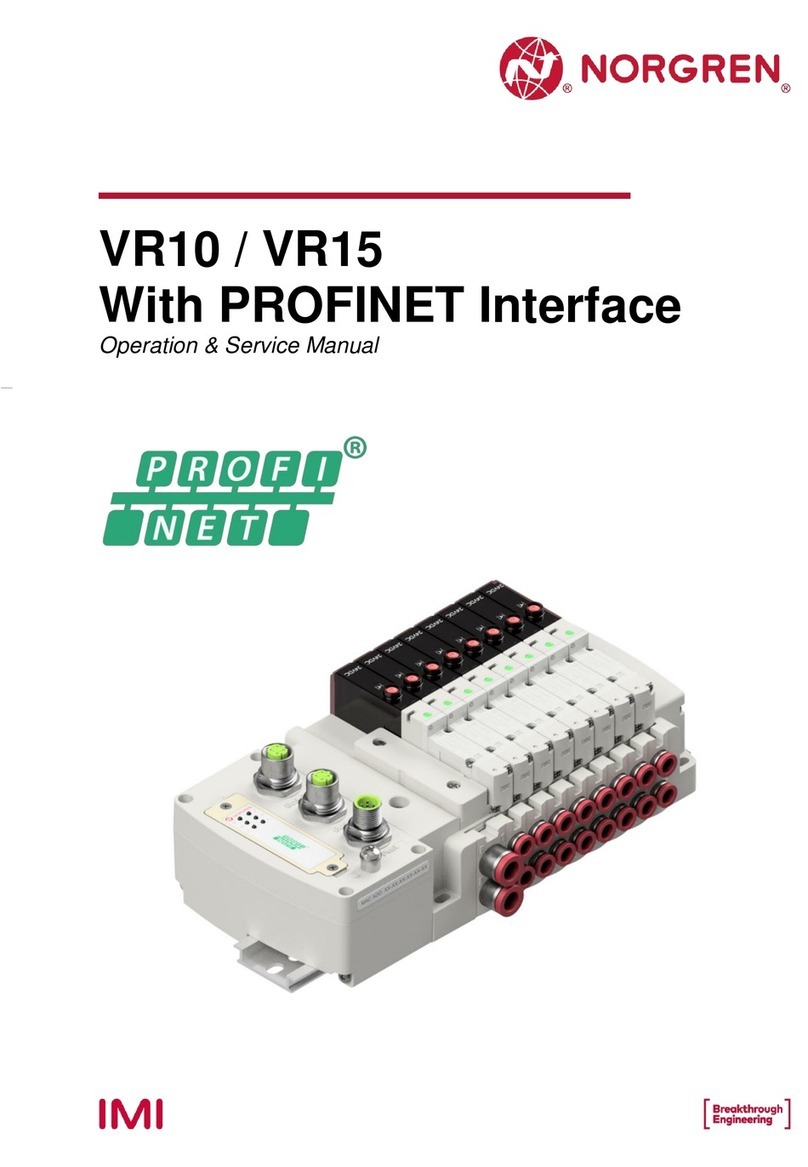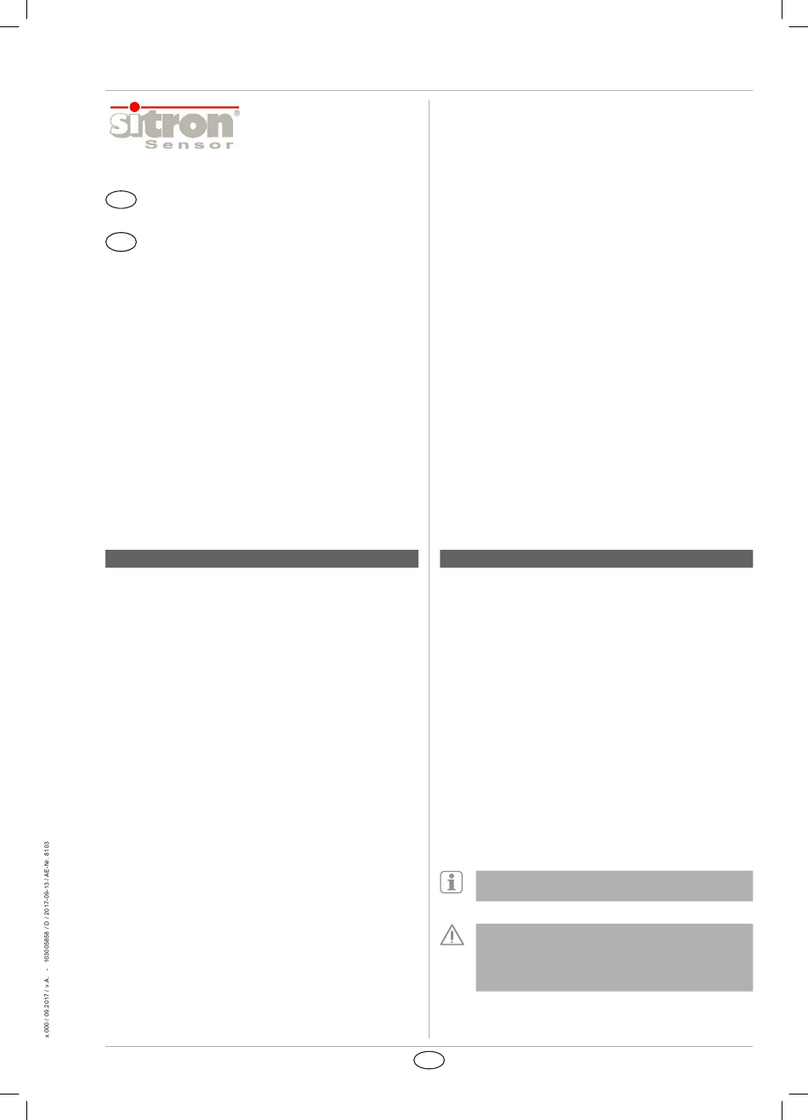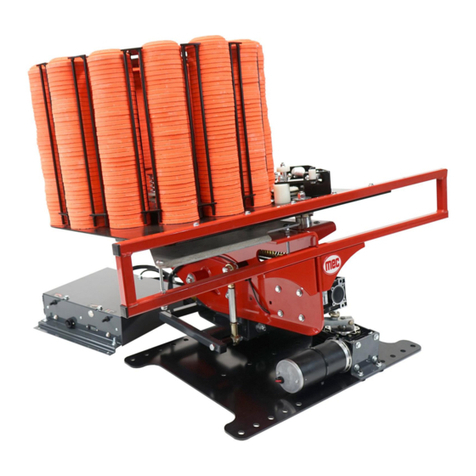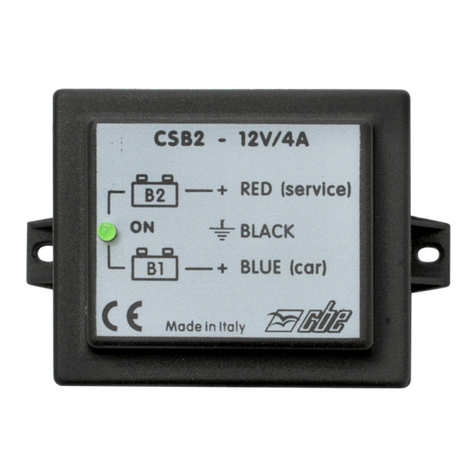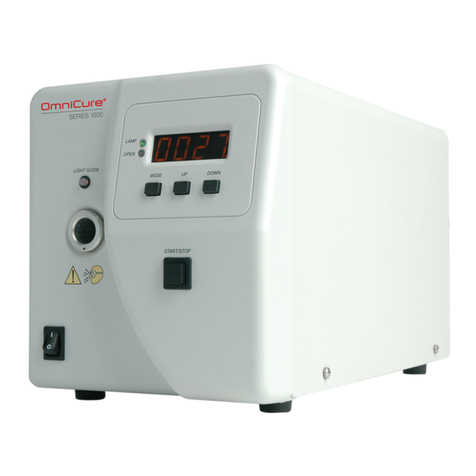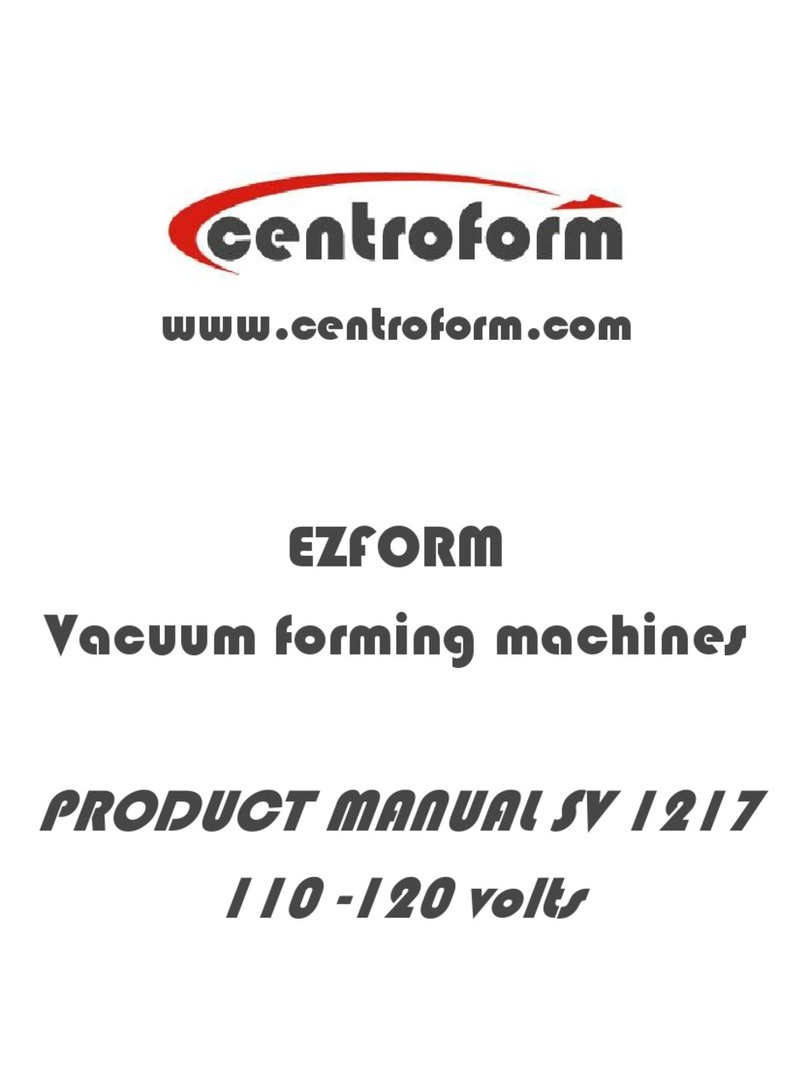pela tools SBC420 User manual

Blästerskåp med utsug SBC420
Blasting cabinet with extractor
Item No:
63045

Kontaktinformation
Verktygsboden Erlux AB
Källbäcksrydsgatan 1
SE-507 42 Borås
Telefon: 033-202650
Mejl: [email protected]
Miljöskydd/Skrotning
Återvinn oönskat material, släng
det inte bland hushållssoporna. Alla
maskiner, tillbehör och förpackning-
ar skall sorteras och lämnas till en
återvinningscentral och där kasseras
på ett miljövänligt sätt.
Specifikationer
Nätanslutning.......................... 230 V/50 Hz, 1240 W
Max. arbetstryck ............................................. 8,6 bar
Luftförbrukning ......................ca 400-600 liter/minut
Tryckluftsanslutning ........................................... 1/2”
Yttermått ..............................1350 x 900 x 1700 mm
Innermått ................................1210 x 600 x 580 mm
Vikt ...................................................................157 kg
Siktglas ...............................................570 x 270 mm
Komplett med lysrörslampa, skyddshandskar och
skyddslm.
Viktigt!
Läs noga igenom bruksanvisningen,
säkerhetsinstruktioner och monteringsanvisningar
innan du använder produkten. På så sätt får du ut
mesta möjliga av din apparat och felaktig
användning undviks. Spara bruksanvisningen för
framtida behov och vid en eventuell försäljning ska
anvisningen följa med skåpet.
SÄKERHETSFÖRESKRIFTER
Läs noga igenom manualens säkerhetsföreskrifter
innan du använder blästerskåpet. VARNING! När
blästerskåpet används så måste grundläggande
försiktighetsmått alltid följas för att reducera
risken för personskada och andra risker orsakade
av för högt lufttryck.
1. Anslutande tryckluftsslangar bör inte ha en
mindre dimension än 8 mm och skall klara ett
tryck på minst 8,6 bar. Lossa alltid
stickkontakten från vägguttaget och koppla
bort tryckluftslangen när blästerskåpet inte
används, vid påfyllning av blästermedel, vid all
slags service och vid byte av tillbehör.
2. Tryckluften skall vara fri från föroreningar
tex olja, fukt etc. Använd ej blästerskåpet på
fuktiga, våta eller dåligt upplysta arbetsplatser.
Utsätt ej blästerskåpet för regn. Håll arbetsytan
väl upplyst och ren. Stökiga arbetsplatser
innebär större risk för olyckor.
3. Anslut endast till jordat 230 V/50 Hz eluttag.
4. Använd skyddsglasögon och hörselskydd.
Använd alltid godkända skyddsglasögon när
blästerskåpet används. OBS! Vanliga
glasögon är inte skyddsglasögon. Använd
hörselskydd eftersom blästerskåpets ljudnivå
kan vara hög vid användandet. Använd endast
rekommenderade blästermaterial. Ersätt alltid
ett trasigt skyddsglas med ett av motsvarande
storlek och kvalitet.
5. Håll barn borta från utrustningen. Barn får ej
uppehålla sig i närheten av blästerskåpet. Låt
dem aldrig hantera blästerskåpet eller dess
tillbehör.
6. När blästerskåpet inte används ska det
förvaras på torr plats för att skyddas mot rost,
samt i ett låst utrymme så att det förvaras
oåtkomligt för barn.
7. Byt ut handskarna. Skyddshandskarna slits, byt
ut dem mot nya när så krävs.
8. Stäng och regla luckan vid användning.
9. Var aktsam om adaptern. Lossa aldrig adaptern
från vägguttaget med våta händer. Håll
elsladden borta från värme, olja och vassa
kanter.
Monteringsinstruktion
1. Ta bort alla delar från insidan av skåpet
tillsammans med gallret från botten av lådan, under
kartongen.
2. Lägg skåpet uppochner och montera benen,
använd M6 x 12 mm skruv. De främre benen är
märkta. Montera tvärstag mellan bakben och
framben.
3. Ställ upp skåpet på benen och montera
regulatorn (9) på vänster framben med M6x 12 mm
skruv och mutter.
4. Placera fotpedalen mellan frambenen.
5. Fäst doseringsventilen (13), använd tre skruvar
för att fästa gångjärnet på baksidan av skåpet.
Avsluta med att stänga lucklåset.
6. Montera höger och vänster dörr med skruv och
mutter som sitter på gångjärnet. Montera
tätningslist. Montera plåten för dörrlåsen på
respektive sida. Justera i sidled så att dörren tätar
lagom mycket.
7. Placera lampglaset på packningen med
siktskyddet vänt nedåt ovanpå blästerskåpet.
Montera i lysrören i lampan och fäst den därefter
på plats.
8. Använd 4 M6 x 12 mm skruv och änsmutter för
att montera dammsugaren. Lossa på
insugsskyddet på insidan och täta runt
anslutningsröret. Montera skakfunktionen inifrån

Användning
1. Förberedelser innan blästring. Alla delar som
skall blästras måste vara fria från olja, fett och fukt.
Försäkra dig om att delarna är torra innan du lägger
dem i skåpet.
2. Lufttryck. Normalt arbetstryck ligger mellan
3,5 till 5,5 bar. Upp till 8,6 bar kan användas men
vid så pass högt tryck förstör vissa
blästermaterial som tex glaskulor. Normalt
ställs trycket till 5,5 bar, detta passar de esta
material, för material såsom stål, aluminium
eller ömtåliga ytor så börjar man vid ett lägre
tryck och ökar vid behov tills man når en önskad
effekt.
3. Blästerpistolens vinkel och avstånd. Rikta
pistolen i 45˚ till 60˚ vinkel mot föremålet. Låt
rikoschetterna riktas mot kabinettets baksida.
Håll inte pistolen i 90˚ vinkel mot föremålet
eftersom blästermaterialet då studsar tillbaka
mot pistolen och reducerar blästerstrålen. Det
sliter också på pistolens delar och på siktrutan.
Håll pistolen på ca 15 cm avstånd.
Varning. Pistolen skall alltid peka ifrån
operatören mot föremålet som skall blästras.
Blästra aldrig med kabinettsdörren olåst eller
öppen. Tag alltid bort luftanslutningen vid
underhåll och service av apparaten.
4. Blästermedel. Blästermedlet skall alltid hålla
en god kvalitet och vara torrt. Fukt förorsakar att
blästermaterialet ödar sämre och sätter igen
insugsrör, slangar och behållare.
5. Munstyckets storlek. Genom att öka
munstyckets diameter kan avverkningen ökas
markant men detta kräver ökat luftöde
(kompressorn måste kunna ge detta).
dammsugaren, placera fjädern på utsidan,
justera med muttern hur långt in man trycker
stången. Koppla ihop anslutningsladden med
sladden från lamphusets vänstra sida.
9. Kontrollera och efterdra alla muttrar och skruvar.
10. Lägg i vänster och höger galler. Det högra
gallret har ett klippt hörn. Dra slangarna genom
öppningen.
11. Anslut kontakten till ett jordat nätuttag. Tryck
på strömbrytaren, belysningen tänds och
dammsugaren startar.
12. Fyll på med lagom mängd blästermedel, ca 1
säck (25 kg). För mycket blästermedel kan hämma
ödet.
Underhåll
1. Blästerpistolen. Efter 10-12 timmars
använd ning skall munstycket kontrolleras. Om
munstycket slits ojämnt skall det vridas 1/4 varv
efter 10 timmars användning.
2. Klumpbildning av blästermedel.
Klumpbildning orsakas av fukt i lufttillförseln
eller från delar som är feta eller oljiga. Om det
inte åtgärdas kommer blästermedlet att öda
ojämnt och till slut sätta igen insugsrör eller
pistolen. Kontrollera lufttillförseln, montera vid
behov en effektiv fuktavskiljare. Avfetta delar
som skall blästras ordentligt innan du blästrar
dem.
3. Omvänt tryck. Om blästermedlet stoppar
ibland, håll för munstycket på pistolen och tryck
på utlösaren några sekunder. Detta orsakar att
luften trycks ut baklänges och därmed rensas
blästerslangen. På detta sätt kan man enkelt
avhjälpa igensättning.
4. Blästerpistolen tappar i tryck. Ställ
regulatorn trycket på 5,5 bar, aktivera
blästerpistolen och kontrollera på tryckmätaren,
om trycket sjunker markant tyder det på att
luftförsörjningen inte är tillräcklig. Detta kan
bero på att slangen har för liten diameter, en
reducerande snabbkoppling, ett igensatt lter
eller en kompressor som inte ger tillräckligt
öde. Luftslangen bör vara 1/2" eller större.
5. Dålig sikt - extremt dammigt. Luftintaget
skall vara fritt från föremål och skall tillåta luften
att komma in i kabinettet. Dammsugarens
behållare kan vara full och behöver tömmas
(öppna luckan i botten av dammsugaren för att
tömma behållaren). Dammltret i
dammsugaren kan vara igensatt eller behöva att
bytas ut. Blästermedlet kan vara förbrukat och
består mestadels av dammpartiklar, töm ut och
byt medlet, rengör stoftavskiljare och lter.
6. Dålig sikt - siktrutan dammig. Siktrutan har
en klar skyddslm monterad. Efter hand
kommer lmen att mattas, byt då ut den mot en
ny. Genom att använda skyddslm kan
livslängden på siktrutan förlängas. Var noga
med att tejpa ordentligt när ny skyddslm
monteras annars kommer stoft att komma in
och lägga sig mellan glaset och lmen.
7. Dåligt flöde av blästermedel. Kontrollera så
att fukt inte förekommer i kabinettet, installera
vid behov fuktavskiljare, byt ut fuktigt
blästermedel och rengör slangar och
munstycken. Sök efter eventuella hål i
slangarna, byt vid behov. Skräp i blästermedlet,
se upp så att inte eventuellt papper hamnar i

medlet, detta förorsakar lätt att munstycken och
slangar sätts igen. Byt ut eller sålla
blästermedlet.
att förorenas och förbrukas snabbare.
Emellertid ju mindre du har i systemet desto
mindre behöver du byta ut.
5. Blästermedlets väg. Ersätt slangar som visar
tecken på mjuka äckar eller visar tecken på
förslitning. Anpassa pistolens munstycke för
att få ett lämpligt öde. För fet mix förorsakar
en pulsering från pistolen. Ett ovanligt högt ljud
när du blästrar indikerar en för mager mix. En
fet mix resulterar i mindre rörelser medans en
mager mix reducerar antalet kollisioner. Båda
minskar effektiviteten. Om något känns oklart, vi
hjälper gärna till med instruktioner och svarar på
frågor – kontakta vår verkstad. Telefon 033-20
26 50 eller verkstad@verktygsboden.se.
Öka driftsäkerheten genom förebyggande
åtgärder
Det vanligaste problemet för en användare med
sin blästerutrustning är att produktionskapaciteten
sjunker. Ett väl underhållet blästerskåp kommer
att kunna ge användaren många år av konstant
service. När produktionen minskar kan operatören
vanligtvis nna orsaken till problemet genom att
kontrollera följande:
1. Luftförsörjning. Om tryckmätaren visar
tillfredsställande obelastat värde
(blästerpistolen är inte aktiverad), aktivera
blästerpistolen och kontrollera på tryckmätaren,
om trycket sjunker markant tyder det på att
luftförsörjningen inte är tillräcklig eller
förhindrad. Rengör lter och kontrollera
fuktavskiljare och slangar inklusive kopplingar
tillbaks till kompressorn. Använd en tryckmätare
för att kontrollera trycket längs ledningen eller
ersätt blästerskåpets regulator om den visar
felaktiga värden.
2. Blästerpistol. Munstycket slits ut så
småningom. Ersätt det med ett nytt när
dimensionen ökat med 1/16 av originalstorleken
eller om det slitits ojämnt. Justera vid behov för
olika blästermedel och villkor. En korrekt
arbetande pistol drar 38 - 43 cm/Hg på en
manometer.
3. Dammsugare. (Medföljer inte i denna modell.)
Otillräcklig ventilation i kabinettet resulterar
i reducerad effektivitet från blästerpistolens
munstycke och minskad översikt över arbetet
i skåpet. Använd dammsugarens skakfunktion
efter ca 20 - 30 minuters användning eller efter
varje användningstillfälle (oftare när
blästermedlet blivit slitet). Töm behållaren minst
en gång per dag. Tag ur ltret och blås rent
regelbundet med tryckluft, för att dammsugaren
skall kunna arbeta effektivt. Byt ltret vid behov.
4. Blästermedel. Använd blästermedel av hög
kvalitet med en storlek anpassad efter
uppgiften. Blästermedel som innehåller
kvartspartiklar är en hälsofara. Kvartsdamm
som andas in kan ge upphov till sjukdomar, t.ex.
silikos som är en obotlig lungsjukdom. Det tar
lång tid innan silikos uppträder. Därför är det
viktigt att skydda sig mot dammet redan från
början. Fukt i ett smutsigt blästermedel kan
orsaka akut stopp. Förvara blästermedlet på en
torr plats och fyll på med lämplig mängd.
Blästermedlet bör ligga på en nivå ca 15 cm
över insugsröret, har man mindre kommer det
Bruksanvisning
1. Anslut blästerskåpets adapter till ett 230 V/50
Hz eluttag.
2. Anslut blästerskåpets tryckluftsanslutning till
kompressorns tryckluftslang.
Kompressorn bör ha en kapacitet av minst 420-
700 liter/min vid 5,5 bar. Se till att det inte nns
något luftläckage. Om en läcka skulle uppstå,
koppla bort tryckluftsslangen och reparera
läckan innan blästerskåpet används igen.
VARNING! Använd inte högre lufttryck än 8,6
bar till blästerskåpet.
3. Kontrollera slangarna inuti blästerskåpet, samt
anslutningen till blästringspistolen. Se även till
sugslangen för blästermedlet så att den sitter
ordentligt fast på blästerpistolen och i
sugröret.
4. Häll blästermedel i botten av blästerskåpet.
Använd inte för mycket blästermedel eftersom
detta kan resultera i långsam och ineffektiv
blästring.
5. Tänd blästerskåpets belysning med hjälp av
strömbrytaren.
6. Placera detaljen som ska blästras på gallret
inuti blästerskåpet och stäng luckan.
7. Stoppa in händerna i skyddshandskarna och se
till att båda händerna är lättrörliga.
8. Greppa blästerpistolen och rikta den mot delen
som ska blästras. Om inget blästermedel
kommer kan insugsröret behöva rensas. OBS!
Rikta aldrig blästerpistolen mot ngrar eller
handskar. Du riskerar i så fall att få allvarliga
skador.
9. Håll detaljen som ska blästras med den
lediga handen. Håll ngrarna på så vis att de
inte hamnar i blästringsödet. Det kan vara
nödvändigt att ytta på ngrarna under
blästringens gång för att undvika skada på
ngrarna.

10. Du kan, vid behov, hålla munstycket så nära
som 5 cm ifrån ytan som ska blästras. För
blästerpistolen fram och tillbaka eller runt i
cirklar, samtidigt som du ser till att hålla
ngrarna borta från blästermedlet.
11. För att kontrollera resultatet av blästringen,
släpp blästerpistolen och avtryckaren och ta ut
händerna ur skyddshandskarna. Öppna dörren
och inspektera föremålet som blästras. Om så
behövs, fortsätt med ytterligare blästring av
föremålet.
12. När det är färdigblästrat, plocka bort föremålet,
lossa lufttrycksslangen och stäng av
belysningen. Drag ur adaptern om
blästerskåpet inte skall användas på längre tid.
Byte av blästermunstycke
Fyra blästermunstycken (2x
Ø
6 och 2x
Ø
7 mm)
medföljer blästerskåpet. Desto grövre
blästermedel, desto större munstycks öppning.
Underhåll
VARNING! Lossa stickkontakten från vägguttaget
och koppla ur tryckluften före all slags service och
vid byte av tillbehör.
1. Rengör luftltret regelbundet och ofta.
2. Kontrollera regelbundet skyddshandskar och
blästermunstycken så att de inte har för
mycket slitage.
3. Kontrollera blästermedlet. Håll det fritt från
smuts och fukt. Byt ut blästermedlet när det
blivit utslitet.
4. Rengör regelbundet blästerskåpets insida.
5. Undvik fukt i tryckluftslangen.
6. Kontrollera en gång i veckan luckans
tätningslist.
7. Använd ej blästerskåpet med ett högre tryck än
8,6 bar.
8. Om lysrören behöver bytas, byt dem mot ett rör
av motsvarande typ.
9 Om blästermedlet fastnar på grund av statisk
elektricitet, så kan det bero på för torr väderlek.
Lämna det färdigblästrade föremålet på gallret
och undvik att röra det tills blästermedlet
”rinner” av.
Reservdelslista


Contact
PELA Tools
Solängsvägen 13
SE-513 70 Borås
Phone: 033-202650
E-mail: [email protected]
Environmental protection/
Scrapping
Recycle any unwanted material,
do not throw it in the household
rubbish. All machines, accessories
and packaging must be sorted and
left at a recycling center and disposed
of in an environmentally friendly manner.
1.
Specifications
Connection.............................. 230 V/50 Hz, 1240 W
Max. working pressure................................... 8,6 bar
Air consumption................ca 400-600 liters/minute
Compressed air connection............................... 1/2”
External dimensions.............1350 x 900 x 1700 mm
Internal dimensions................1210 x 600 x 580 mm
Weight...............................................................157 kg
Visible glass.........................................570 x 270 mm
Complete with lamp, gloves and protective lm.
Important!
Carefully read the safety instructions and
installation instructions before using the product.
This way you get the most out of your device and
accidents can be avoided. Save the operating
instructions for future use. In the event of a sale,
the instructions must accompany the cabinet.
SAFETY INSTRUCTIONS
Carefully read the manuals safety instructions
before using the blasting cabinet. WARNING! When
using the blast cabinet, basic precautions must
always be followed to reduce the risk of personal
injury and other risks caused by excessive air
pressure.
1. Connecting compressed air hoses should not
have a dimension smaller than 8 mm and must
withstand a pressure of at least 8.6 bar. Always
disconnect the plug from the wall socket and
disconnect the compressed air hose when the
blasting cabinet is not in use. And when lling
with blast media, when servicing all kinds of
accessories and when changing accessories.
2. The compressed air must be free of
contaminants such as oil, moisture, etc. Do not
use the blasting cabinet in damp, wet or poorly
lit workplaces. Do not expose the blast
cabinet to rain. Keep the work surface well lit
and clean. Dirty workplaces involve a greater
risk of accidents.
3. Only connect to a grounded 230 V / 50 Hz
electrical outlet.
4. Wear safety goggles and hearing protection.
5. Always wear approved safety goggles when
using the blasting cabinet. NOTE! Ordinary
glasses are not goggles. Use hearing protection
as the noise level of the blower cabinet may be
high during use. Use only recommended blas-
ting materials. Always replace a broken protec-
tive glass with one of the same size and quality.
6. Keep children away from equipment. Children
are not allowed to stay near the blast cabinet.
Never let them handle the blast cabinet or its
accessories.
7. When the blast cabinet is not in use, it must
be stored in a dry place to protect against rust,
and in a locked space so that it is stored out of
reach of children.
8. Replace the gloves. Protective gloves wear,
replace them with new ones when required.
9. Close and lock the door during use.
10. Be careful of the adapter. Never disconnect the
adapter from the wall outlet with wet hands.
Keep the power cord away from heat, oil and
sharp edges.
Assembly instructions
1. Remove all parts from the inside of the
cabinet together with the grid from the bottom of
the drawer, under the packaging..
2. Place the cabinet upside down and mount the
legs, use M6 x 12 mm screw. The front legs are
marked. Fit cross braces between back legs and
front legs.
3.Set up the cabinet on the legs and mount the
regulator (9) on the left front leg with M6x 12 mm
screw and nut.
4. Place the foot pedal between the front legs.
5. Attach the metering valve (13), use three screws
to attach the hinge to the back of the cabinet.
Finish by closing the door lock.
6. Install the right and left doors with screws and
nuts located on the hinge. Install sealing strip.
Install the plate for the door locks on each side.
Adjust sideways so that the door seals just enough.
7. Place the lamp glass on the gasket with the
screen protector facing down on top of the blast
cabinet. Mount the lamp and then fasten it in place.
8. Use 4 M6 x 12 mm screw and ange nut to
mount the vacuum cleaner. Loosen the suction
cover on the inside and seal around the connecting
pipe. Mount the shaker function from inside the

Increase operational reliability through
preventive measures
The most common problem for a user with their
blasting equipment is that production capacity
decreases. A well-maintained blasting cabinet will
be able to provide the user with many years of
constant service. When production decreases, the
operator can usually nd the cause of the problem
by checking the following:
1. Air supply. If the pressure gauge shows a
satisfactory unloaded value (the blast gun is not
activated), activate the blast gun and check the
pressure gauge, if the pressure drops
signicantly it indicates that the air supply is not
sucient or obstructed. Clean lters and check
humidity traps and hoses including connections
back to the compressor. Use a pressure gauge
to check the pressure along the line or replace
the blast cabinet regulator if it shows incorrect
values.
2. Blast gun. The nozzle wears out eventually.
Replace it with a new one when the dimension
has increased by 1/16 of the original size or if
it has worn unevenly. Adjust if necessary for
different blast media and conditions. A correctly
working pistol draws 38 - 43 cm / Hg on a
manometer.
3. Dust collector. (Not included in this model.)
Insucient ventilation in the cabinet results in
reduced eciency from the blast gun nozzle and
reduced overview of the work in the
cabinet. Use the dust collector shaker function
after approx. 20 - 30 minutes of use or after
each use (more often when the blast media has
worn out). Empty the container at least once a
day. Remove the lter and blow regularly with
compressed air, so that the dust collector can
work eciently. Replace the lter if necessary.
4. Blast media. Use high-quality blast media with
a size adapted to the task. Blast media that
contain quartz particles are a health hazard.
Inhaled quartz dust can cause diseases, e.g.
silicosis which is an incurable lung disease. It
takes a long time before silicosis appears.
Therefore, it is important to protect yourself
from the dust from the beginning. Moisture in a
dirty blast media can cause an emergency stop.
Store the blast media in a dry place and top up
with the appropriate amount. The blast media
should be at a level about 15 cm above the
intake pipe, if you have less, it will be
contaminated and consumed faster. However,
the less you have in the system the less you
need to replace.
5. The path of the blast media. Replace hoses
that show signs of soft spots or show signs of
vacuum cleaner, place the spring on the outside,
adjust with the nut how far in you push the rod.
Connect the connection cord to the cord from the
left side of the lamp housing.
9. Check and retighten all nuts and bolts.
10. Insert left and right grid. The right grid has a cut
corner. Pull the hoses through the opening.
11. Connect the plug to a grounded electrical
outlet. Press the power switch, the lighting comes
on and the vacuum cleaner starts.
12. Fill with a fair amount of blast media,
approx. 1 sack (25 kg). Too much blast media can
impede ow.
General
1. Preparations before blasting. All parts to be
blasted must be free of oil, grease and moisture.
Make sure the parts are dry before placing them
in the cabinet.
2. Pressure. Normal working pressure is between
3.5 to 5.5 bar. Up to 8.6 bar can be used, but at
such a high pressure destroys certain blasting
materials such as glass balls. Normally the
pressure is set to 5.5 bar, this is suitable for
most materials, for materials such as steel,
aluminum or fragile surfaces you start at a
lower pressure and increase if necessary until
you reach a desired effect.
3. The angle and distance of the blasting gun. Aim
the gun at a 45˚ to 60˚ angle at the object. Let
the ricochets that face the back of the cabinet.
Do not hold the gun at a 90˚ angle to the object
as the blasting material will then bounce back
against the gun and reduce the blasting jet. It
also wears on the parts of the pistol and on the
sight box. Keep the gun at a distance of about
15 cm. Warning. The pistol must always point
away from the operator towards the object to be
blasted.
Never blast with the cabinet door unlocked or
open. Always remove the air connection during
maintenance and service of the appliance.
4. Blast media. The blowing media must always
be of good quality and dry. Moisture causes the
blast media to ow less and clog intake pipes,
hoses and containers.
5. The size of the nozzle. By increasing the
diameter of the nozzle, the felling can be
increased signicantly, but this requires
increased air ow (the compressor must be able
to provide this).

wear. Adjust the gun nozzle to obtain a suitable
ow. Too greasy mix causes a pulsation from
the gun. An unusually loud sound when blasting
indicates a too lean mix. A greasy mix results
in smaller movements while a lean mix reduces
the number of collisions. Both reduce eciency.
If something feels unclear, we are happy to help
with instructions and answer questions -
contact our workshop: pelatools.com.
Instructions for use
1. Connect the blast cabinet adapter to a 230 V /
50 Hz electrical outlet.
2. Connect the blast cabinet compressed air
connection to the compressed air hose. The
compressor should have a capacity of at least
420-700 liters / min at 5.5 bar. Make sure
there is no air leakage. Should a leak occur,
disconnect the compressed air hose and repair
the leak before using the blast cabinet again.
WARNING! Do not use air pressure higher than
8.6 bar to the blast cabinet.
3. Check the hoses inside the blasting cabinet, as
well as the connection to the blasting gun. Also
make sure that the suction hose for the
blast media is rmly attached to the blasting
gun and to the suction pipe.
4. Pour blast media into the bottom of the
blasting cabinet. Do not use too much blasting
agent as this may result in slow and ineffective
blasting.
5. Turn on the blast cabinet lighting using the
power switch.
6. Place the part to be blasted on the grid inside
the blasting cabinet and close the door.
7. Put your hands in the protective gloves and
make sure that both hands can move easily.
8. Grab the blast gun and aim it at the part to be
blasted. If no blast agent is present, the
suction pipe may need to be cleaned.
NOTE! Never point the blast gun at ngers or
gloves. In that case, you risk serious injuries.
9. Hold the part to be blasted with your free hand.
Hold your ngers so that they do not end up in
the injection ow. It may be necessary to move
your ngers during the blasting process to
avoid injury to your ngers.
10. You can, if necessary, keep the nozzle as close
as 5 cm from the surface to be blasted. Move
the blasting gun back and forth or in circles,
while keeping your ngers away from the blast
media.
11. To check the result of the blasting, release
the blasting gun and the trigger and take your
hands out of the protective gloves. Open the
door and inspect the object being blasted. If
necessary, continue with further blasting of the
object.
12. When it is nished blasting, remove the object,
loosen the air pressure hose and turn off the
lighting. Unplug the adapter if the blasting
cabinet is not to be used for a long time.
Replacement of blasting nozzle
Four blast nozzles (2x Ø 6 and 2x Ø 7 mm) are
included with the blast cabinet. The thicker the
blast media, the larger the nozzle opening.
Maintenance
WARNING! Disconnect the plug from the wall
socket and disconnect the compressed air before
any service and when changing accessories.
1. Clean the air lter regularly and often.
2. Regularly check protective gloves and blasting
nozzles for wear.
3. Check the blast media. Keep it free from dirt
and moisture. Replace the blast media when it
has worn out.
4. Clean the inside of the blast cabinet regularly.
5. Avoid moisture in the compressed air hose.
6. Check the door sealing tape once a week.
7. Do not use the blasting cabinet with a pressure
higher than 8.6 bar.
8. If the uorescent lamps need to be replaced,
replace them with the same kind of lamp.
9 If the blast media gets stuck due to static
electricity, it may be due to too dry weather.
Leave the nished blasted object on the grid
and avoid touching it until the blast media
”runs off”.

Spare parts list
Blasting pistol
Blasting cabinet
Maintenance
1. The blasting gun. After 10-12 hours of use,
check the nozzle. If the nozzle wears unevenly,
turn it 1/4 turn after 10 hours of use.
2. Lumping of blast media.
Lump formation is caused by moisture in the air
supply or from parts that are greasy or oily. If
not remedied, the blast media will ow unevenly
and eventually clog the intake manifold or gun.
Check the air supply, install an effective
moisture trap if necessary. Degrease parts to be
blasted properly before blasting.
3. Reverse pressure. If the blast media
sometimes stops, hold the nozzle on the gun
and press the trigger for a few seconds. This
causes the air to be forced out backwards and
the blast hose is cleaned. In this way, clogging
can be easily removed.
4. The blast gun drops in pressure. Set the
regulator to 5.5 bar, activate the blast gun and
check the pressure gauge, if the pressure drops
signicantly it indicates that the air supply is not
sucient. This may be because the hose has
too small a diameter, a reducing quick coupling,
a clogged lter or a compressor that does not
provide sucient ow. The air hose should be
1/2 ”or larger.
5. Poor visibility - extremely dusty. The air
intake must be free of objects and must
allow air to enter the cabinet. The dust collector
container may be full and needs to be emptied
(open the lid at the bottom of the dust collector
to empty the container). The dust lter in the
dust collector may be clogged or need to be
replaced. The blast media can be consumed and
consists mostly of dust particles, empty out and
replace the agent, clean dust separators and
lters.
6. Poor visibility - the window is dusty.
The window has a clear protective lm
mounted. Gradually, the lm will wear down,
then replace it with a new one. By using
protective lm, the life of the sight window can
be extended. Be sure to tape properly when
installing a new protective lm, otherwise dust
will come in and settle between the glass and
the lm.
7. Poor flow of blast media Check that there
is no moisture in the cabinet, install a moisture
separator if necessary, replace a damp blast
media and clean hoses and nozzles. Look for
any holes in the hoses, replace if
necessary. Debris in the blast media, be careful
not to put any paper in the media, this easily
causes nozzles and hoses to become clogged.
Replace or sift the blast media.


Verktygsboden Erlux AB Källbäcksrydsgatan 1, SE-507 42 Borås
© Verktygsboden · Borås · Sweden · 0120504-03
This manual suits for next models
1
Table of contents
Languages:
Other pela tools Industrial Equipment manuals
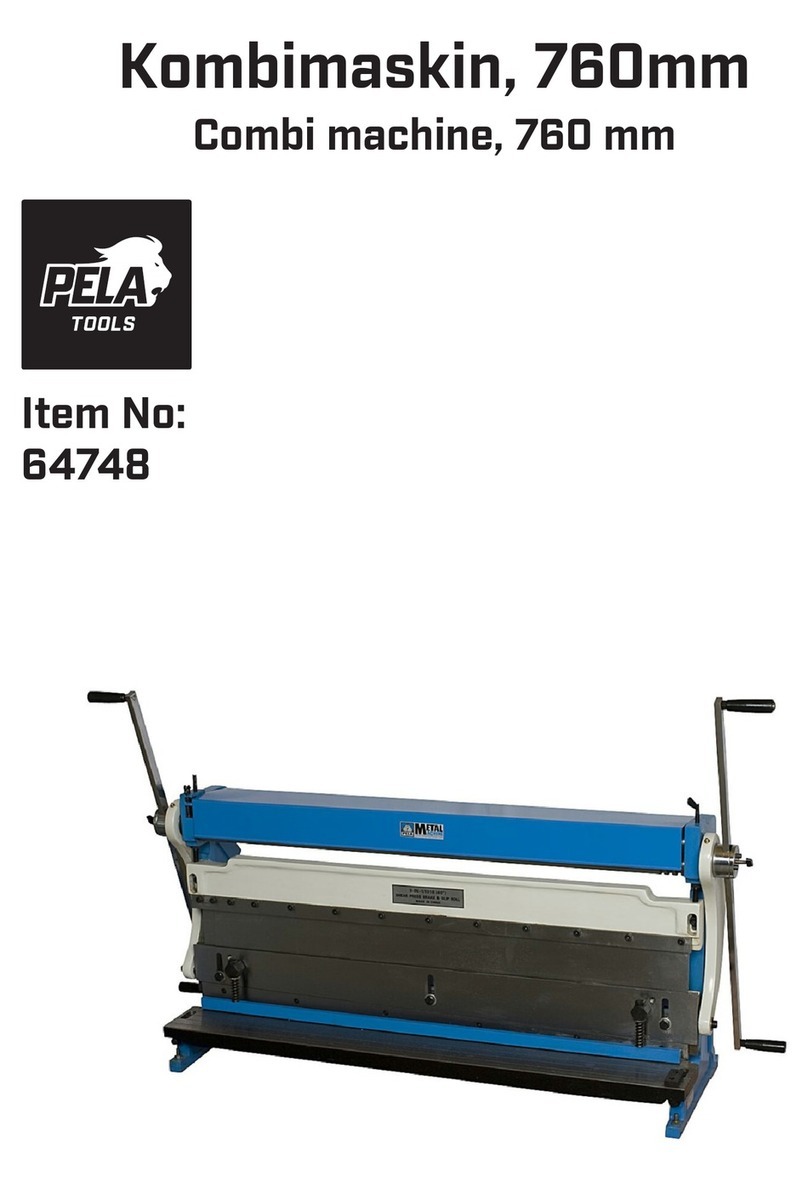
pela tools
pela tools 64748 User manual
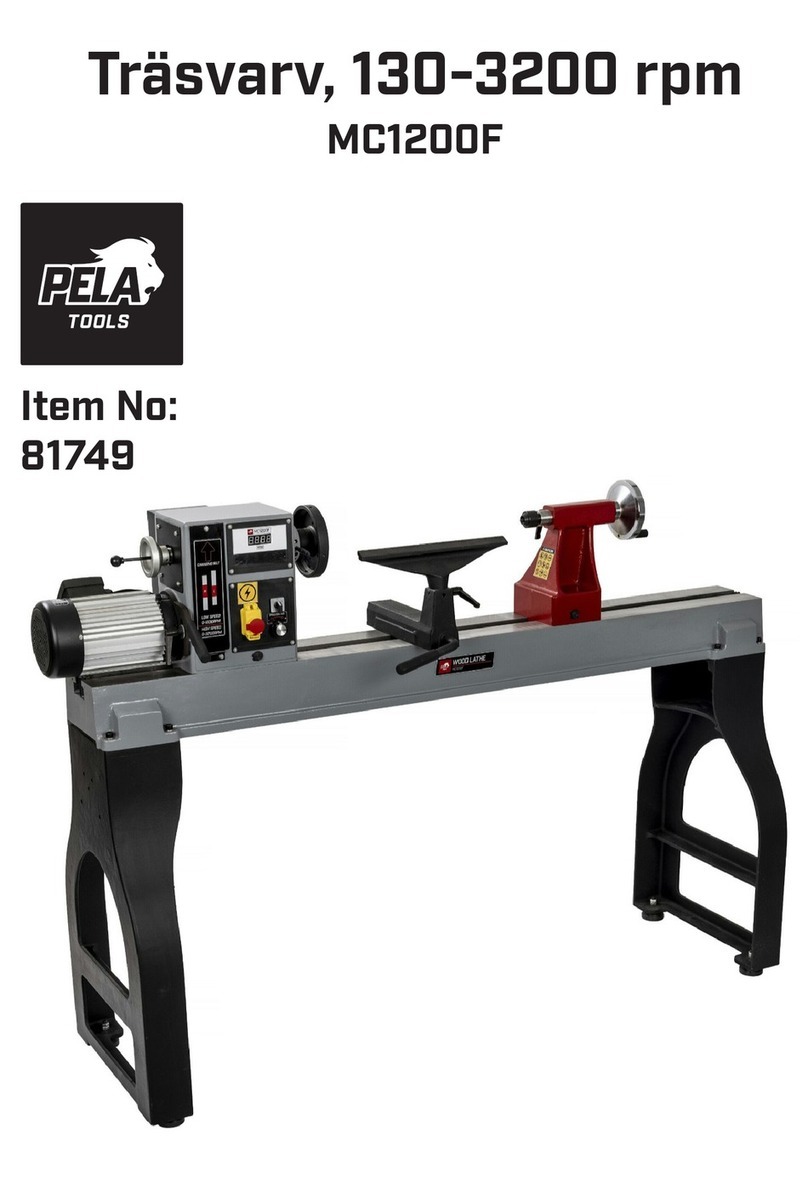
pela tools
pela tools MC1200F User manual
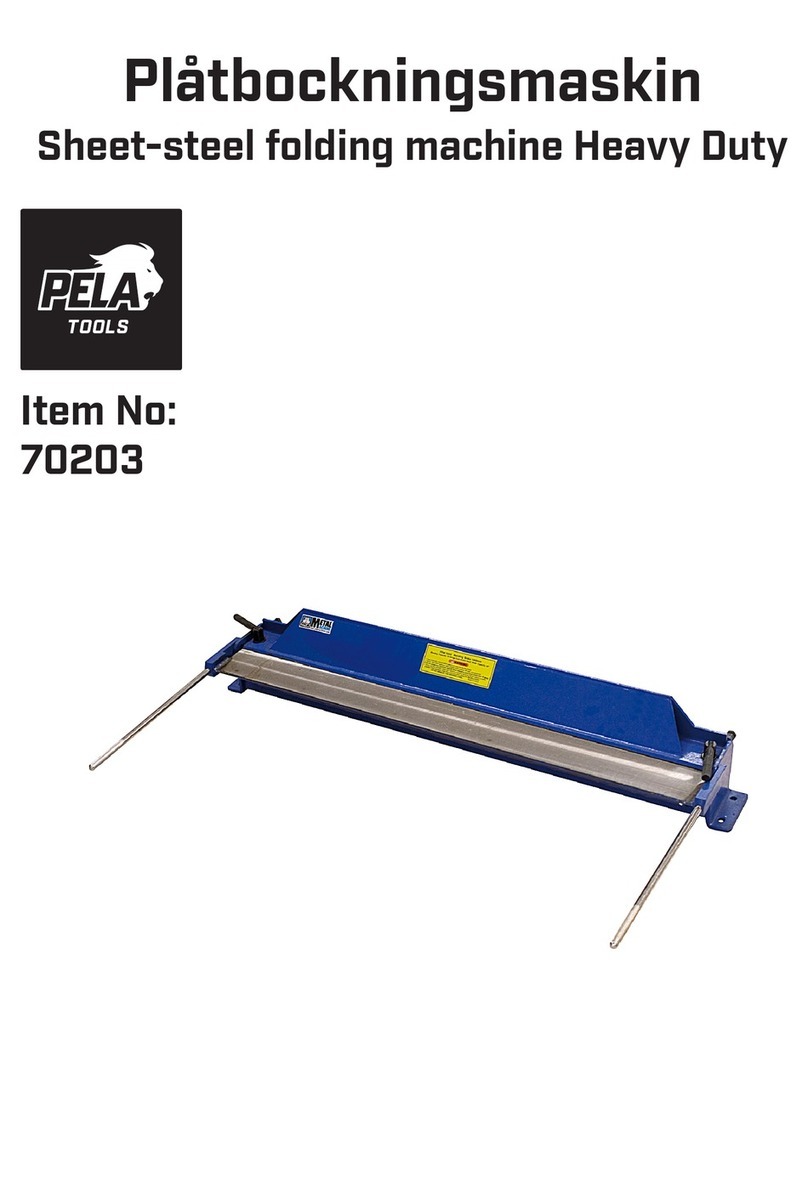
pela tools
pela tools 70203 User manual

pela tools
pela tools 50845 User manual
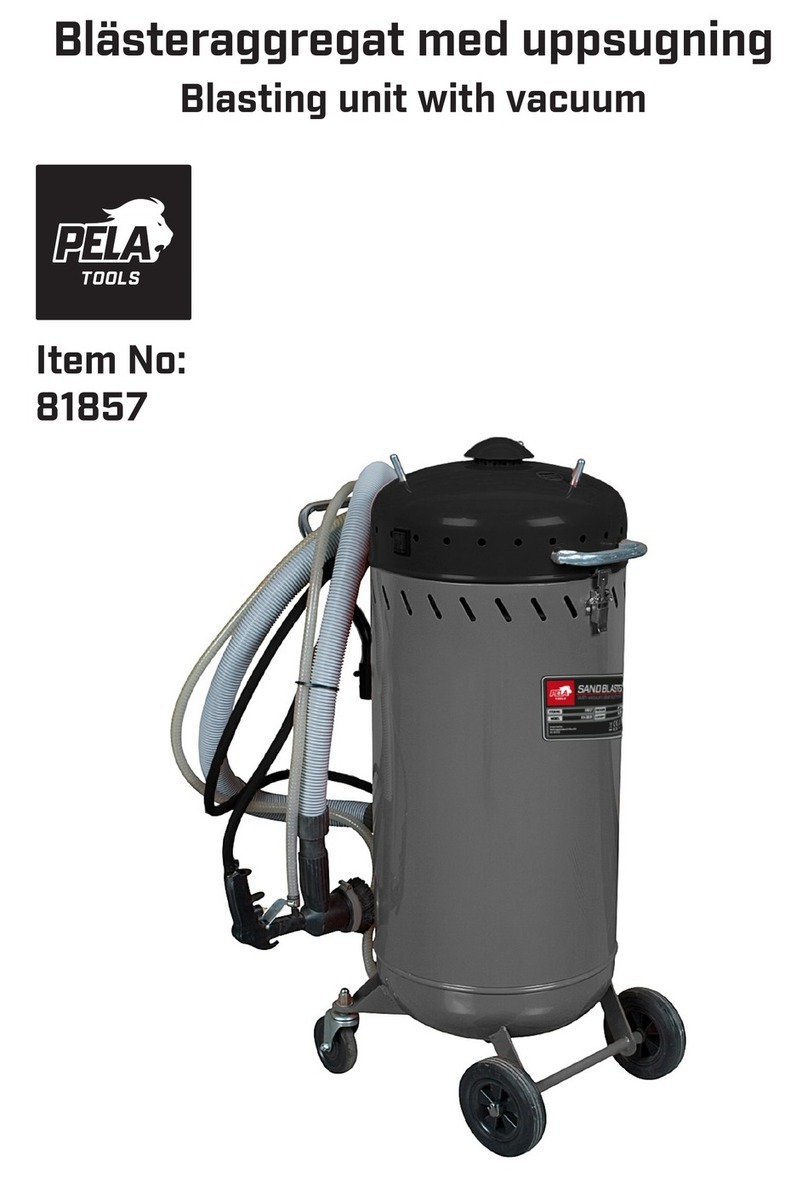
pela tools
pela tools 81857 User manual

pela tools
pela tools 86772 User manual
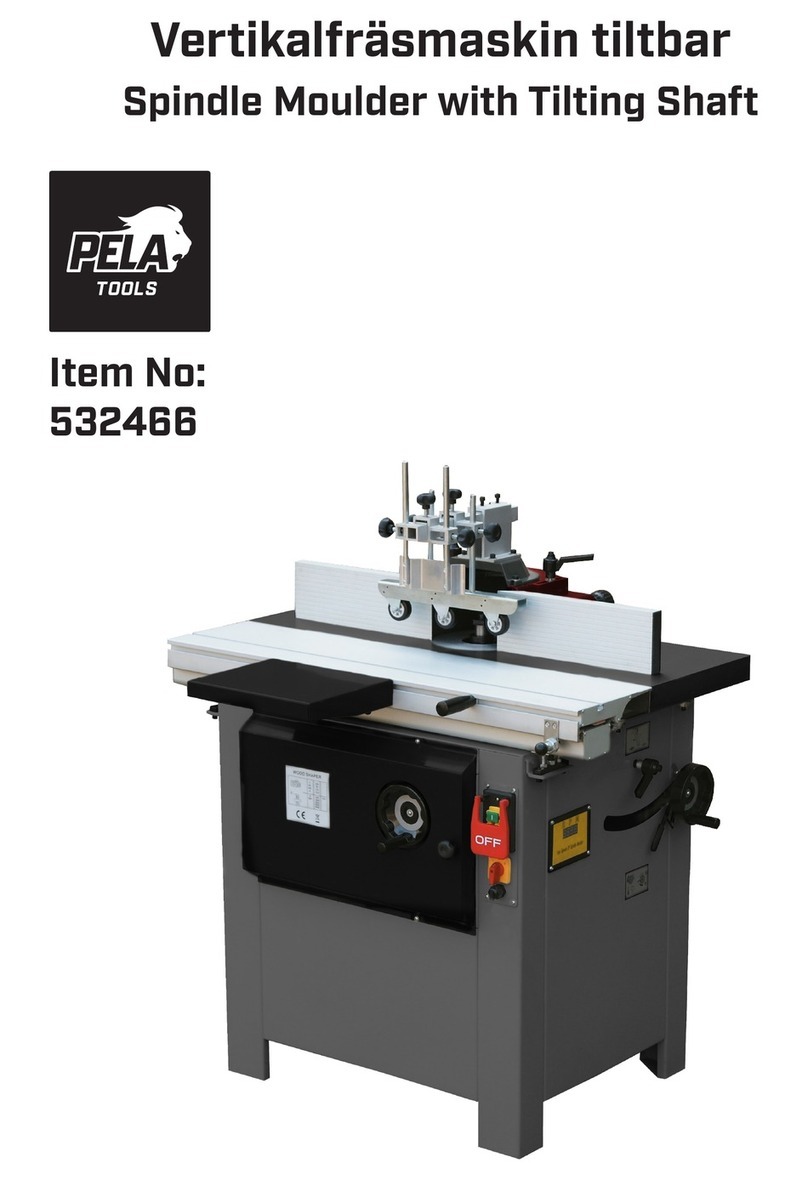
pela tools
pela tools 532466 User manual
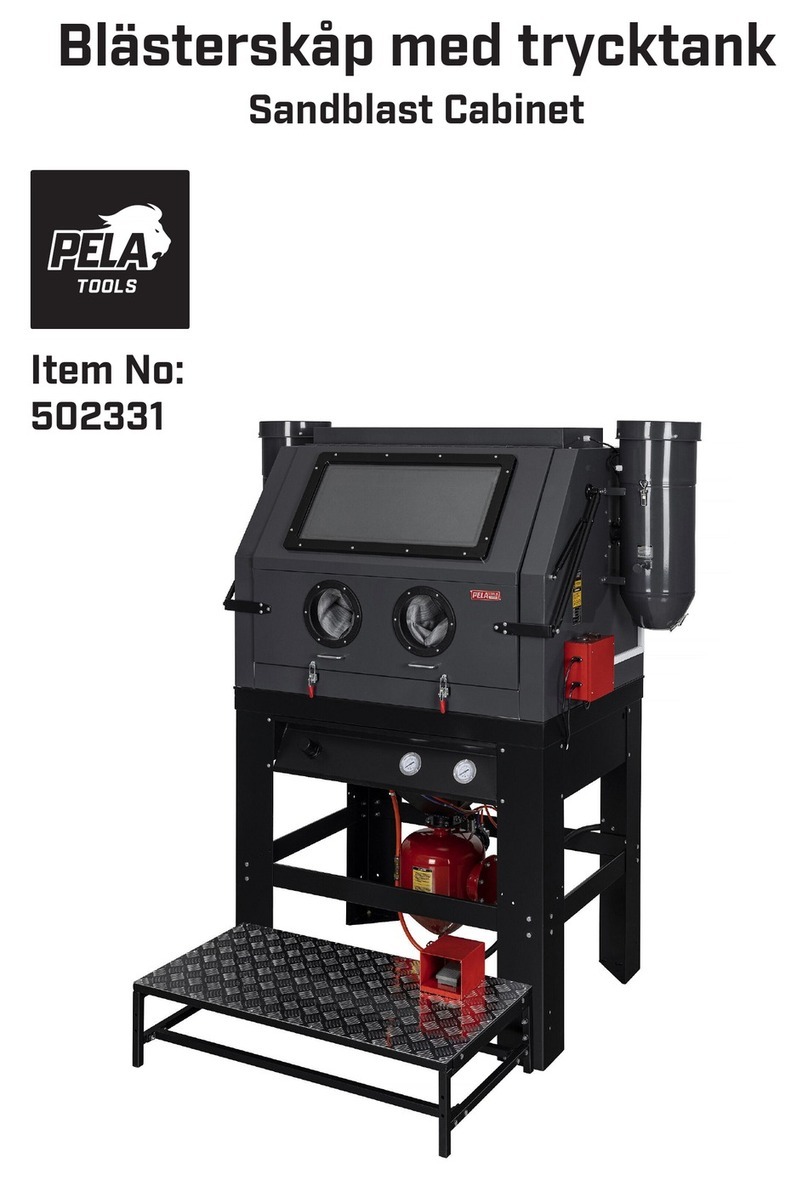
pela tools
pela tools 502331 User manual
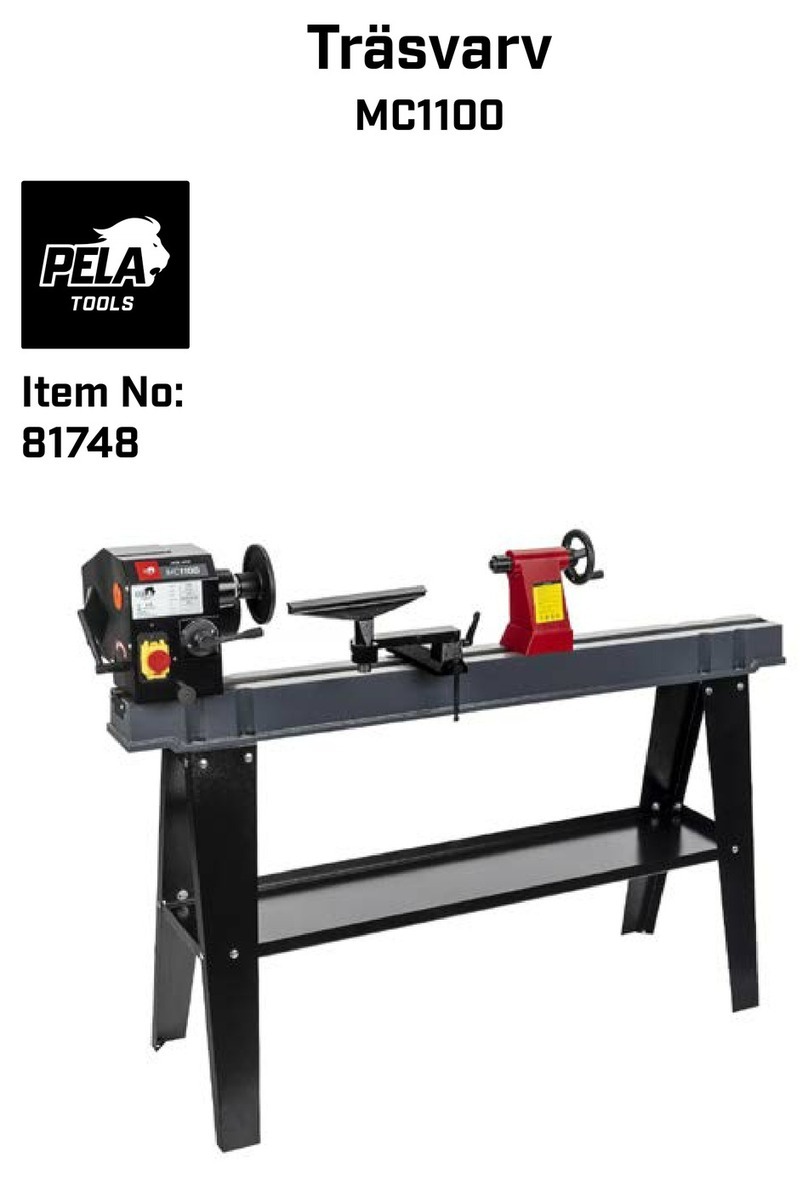
pela tools
pela tools MC1100 User manual
